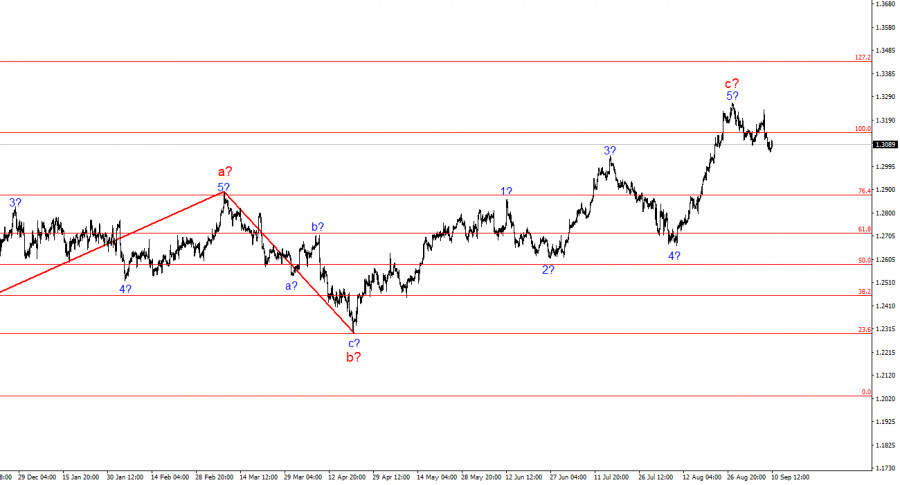

The wave structure for GBP/USD remains complex and highly ambiguous. For a while, the wave pattern seemed convincing, suggesting the formation of a downward wave series targeting levels below 1.2300. However, in practice, demand for the U.S. dollar grew too strongly to realize this scenario, and it continues to rise.
Currently, the wave structure has become increasingly complex. I prefer to use simple structures in my analysis, as complex ones involve too many nuances and ambiguities. We have now seen another upward wave, which has broken the triangle pattern. The current upward wave series, which presumably began on April 22, could become even more extended, as it seems the market will not calm down until all stages of the Fed's rate cuts are priced in. Another three-wave corrective structure is emerging, and a successful breakout of the 1.3142 level, which corresponds to 100.0% on the Fibonacci retracement, indicates the market's readiness for at least a slight decline.
Sellers are struggling, but they aren't giving up. The GBP/USD rate increased by a few points on Tuesday. In the first half of the day, prices rose as the economic reports from the UK could be considered positive. For instance, the unemployment rate fell in June from 4.2% to 4.1%, and the number of unemployment benefit claims was only 24,000, instead of the market-expected 96,000. Therefore, the increase in the British pound in the first half of the day seemed logical. However, the pound managed to gain only 30 basis points and quickly lost them at the beginning of the U.S. session. Thus, I conclude that this data didn't have a significant impact on the market.
What does matter, then? Though it may sound predictable, the U.S. inflation report is crucial. It will be released tomorrow, and it's something all analysts are writing about every day. But the current reality of the forex market is that other data holds very little significance. If U.S. inflation continues to slow as expected, the Federal Reserve will not only conduct the first rate cut in September but also continue cutting rates until the end of the year. I don't believe this will lead to a sharp decline in the dollar, as the market has been pricing in 6-7 rounds of easing since the beginning of the year. Currently, the discussion is about a maximum of 3 rounds of easing. The five-wave upward structure may be completed, indicating that the pound may continue its decline.

The wave pattern for GBP/USD still suggests a decline. If the upward trend that began on April 22 has already acquired a five-wave form, we should expect at least a three-wave correction. In my view, it's worth considering selling the instrument with targets around the 1.2627 level. However, sellers have already failed to hold the 1.3142 level once, and the upward wave series could continue to extend indefinitely with the current news background. But for now, I expect a correction.
On a higher time frame, the wave pattern has transformed. We can now assume the formation of a complex and extended upward corrective structure. At the moment, it's a three-wave structure, but it could transform into a five-wave structure, which may take several months or longer to complete.

PAUTAN SEGERA